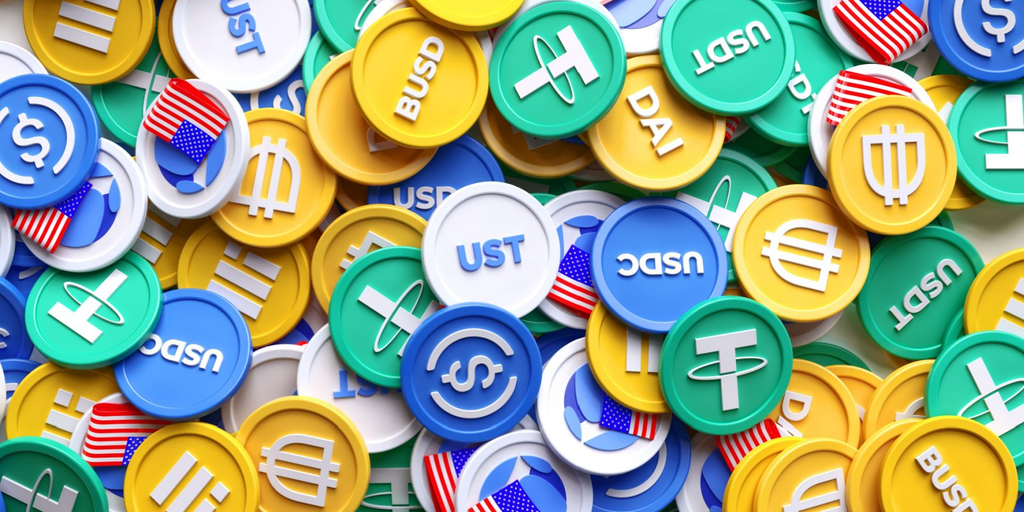Stablecoin issuer Circle argued that tokens pegged to the price of a sovereign currency, such as the U.S. dollar, are not securities, according to a court document filed Thursday.
Weighing in on the Securities and Exchange Commission’s (SEC) lawsuit against Binance, Circle outlined its stance on stablecoins—without taking either party’s side—in an amicus brief filed in district court in Washington, D.C.
Known primarily as the issuer of USD Coin (USDC), Circle is behind crypto’s second-largest stablecoin by market cap that’s worth around $26 billion, according to CoinGecko. And the SEC’s lawsuit against Binance could have ramifications for stablecoins as a whole, Circle said.
The SEC sued Binance in June. It accused the exchange and CEO Changpeng Zhao of operating illegally in the U.S. while misusing customer funds. The holding company for Binance’s U.S.-based affiliate, BAM Management, was also wrapped up in the enforcement action.
Alleging Binance offered investors unregistered securities, America’s financial watchdog highlighted Binance USD (BUSD)—a Binance-branded stablecoin formerly issued by New York firm Paxos—as an example. The token was one of several offerings the SEC took issue with, including Binance’s exchange token, Binance Coin (BNB).
As Cricle notes in its filing, the SEC’s enforcement action against Binance represented the first time the regulator has claimed stablecoins are a security in court. And potential implactions for Binance and BUSD could “have outsized legal and practical stakes,” Circle wrote in its brief.
“Payment stablecoins, on their own, do not have the essential features of an investment contract,” Circle said, referencing the agency’s four-pronged approach for determining whether an offering warrants SEC oversight.
According to the SEC, a core element of its approach for gauging whether something is a security is the “reasonable expectation of profits.” Because stablecoins are “redeemable at a constant value,” Circle argues that stablecoins on their own don’t meet the standard.
The context surrounding how BUSD was offered to investors is central to the SEC’s allegations, Circle notes. In its complaint, the SEC takes issue with how Binance marketed BUSD as an offering that could generate returns based on an annual percentage yield.
“Nowhere in the complaint does the SEC allege that such stablecoins, standing alone, are securities,” Circle’s attorneys write. “Instead, the SEC alleges that Binance took additional steps that collectively turned BUSD sales into investment contracts.”
Additionally, Circle argued that stablecoins—primarily as payments vehicle—don’t resemble financial instruments found to be securities while highlighting their utility. Circle said: “People do not use a stock certificate to buy pizza, for example.”
Some stablecoins effectively place a digital wrapper around the U.S. dollar, and the SEC’s opinion on whether that process turns something into a security was called into question earlier this week. New York Representative Ritchie Torres pressed SEC Chair Gary Gensler on a regulatory hypothetical regarding Pokémon cards represented by a digital token.
Rostin Behnam, Chair of the Commodity Futures Trading Commission, suggested stablecoins are commodities in March. But Gensler has scrutinized stablecoins in the past. Last year, America’s top financial cop compared stablecoins to “poker chips,” commonly used by traders to lock in potential profits.
At the same time, Federal Reserve Chair Jerome Powell suggested stablecoins should be regulated “in comparable ways” to bank deposits and money market funds back in 2021.
Circle’s opinion comes as lawmakers look to potentially regulate stablecoins, since Meta’s defunct Libra project perked lawmakers ears in 2019. As Kristin Smith, CEO of the Blockchain Association told Decrypt last week: “There is a pathway to get legislation passed this year.”
Binance and USDC Have Some History
Binance gave Circle’s namesake the cold shoulder last September. The exchange said it would stop supporting USDC on its platform and automatically convert customers’ deposits of the token to BUSD.
The move impacted other stablecoins on Binance’s platform as well: Pax Dollar (USDP) and TruesUSD (TUSD). Alongside the changes, Binance said spot trading, futures, and margin lending would cease for the three stablecoins as well.
At the time, Binance said the move would help improve liquidity and capital efficiency for users. Less than a month later, $683 million worth of USDC sat on Binance’s exchange, according to blockchain analytics firm Nansen, compared to $20 billion BUSD and $5 billion Tether (USDT).
Still, users were able to withdraw funds from Binance in their stablecoin of choice. Binance has also moved since then to start accepting USDC deposits on Ethereum scaling solutions Arbitrum and Optimism.
As of this writing, Binance is the leading venue for trading USDC. Across several trading pairs, close to $380 million USDC has traded hands on the exchange over the past day, according to CoinGecko.
Stay on top of crypto news, get daily updates in your inbox.
Credit: Source link




